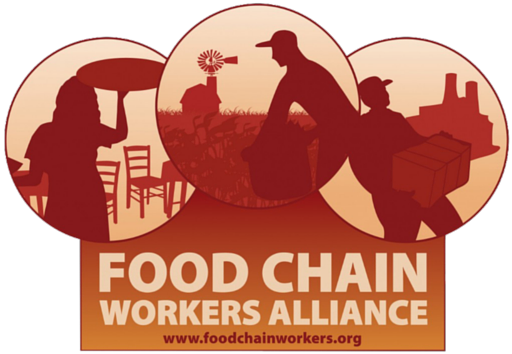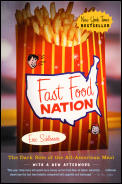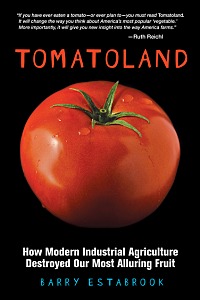“Food Insecurity of Restaurant Workers“
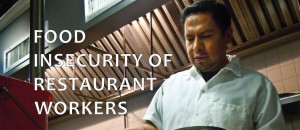 This report by FCWA, Restaurant Opportunities Center of New York, Restaurant Opportunities Center of the Bay, and Food First is the first comprehensive look at food security and employment conditions of workers in the restaurant industry.
This report by FCWA, Restaurant Opportunities Center of New York, Restaurant Opportunities Center of the Bay, and Food First is the first comprehensive look at food security and employment conditions of workers in the restaurant industry.
The report, based on over 280 surveys and interviews with restaurant workers in New York City and the San Francisco Bay Area, highlights the crucial ways in which restaurant workers’ employment conditions affect their ability to feed themselves.
Some of the key findings:
- Twice as many restaurant workers reported being food insecure compared to the overall U.S. population, the New York City population, and the San Francisco Bay Area population.
- Workers in the San Francisco Bay Area were 17% less likely overall to be food insecure than those in New York City.
- Compared to documented immigrants, undocumented immigrants were about 24% more likely to experience food insecurity.
- Tipped workers in NYC were 30% more likely to be food insecure than their non-tipped counterparts.
- Bay Area restaurant workers who served organic or “sustainable” ingredients were 22% more likely to be food insecure compared to other Bay Area restaurant workers.
FRAMING THE FOOD SYSTEM:
The Role of Responsibility in Talking About Food Policy
by Ricky Angel
This paper explores the attribution of responsibility for food policy areas in “Health and Nutrition”, “Sustainability”, and “Food Access and Security” by looking at how the media frames these issues and how people receive that frame. The attribution of responsibility as a frame was developed by Shanto Iyengar, UCLA professor of communications studies and political science. Iyengar argues that there are two forms of responsibility, causal and treatment. Causal responsibility is about the cause and origins of the problem, while treatment responsibility is about who or what should be the solution (1991, p. 8). Further, Iyengar has noted that the storytelling frames concerned with responsibility are episodic and thematic. Episodic stories generally focus on individuals and individual events that are divorced from larger society. Thematic stories, in contrast, focus on larger society and generally makes connections to systemic causes and solutions.
Read the full paper here.
Fed Up
by Dale slongwhite
 Toxic pesticides dropped from planes onto vegetable fields and workers. Farm workers crawling down endless rows from dawn to dusk. Social security withdrawn from pay but not turned in to the government. Birth defects and miscarriages. A dozen funerals in one week.
Toxic pesticides dropped from planes onto vegetable fields and workers. Farm workers crawling down endless rows from dawn to dusk. Social security withdrawn from pay but not turned in to the government. Birth defects and miscarriages. A dozen funerals in one week.
It was all part of the African American experience working on the muck farms of Lake Apopka in central Florida.
Author Dale Slongwhite interviewed eleven former farm workers whose stories have been silenced until now. Using their words, she has given voice to a people whose contribution to the feeding of Americans would have been forgotten.
Check it out here.
Food Rebellions: Crisis and the Hunger for Justice
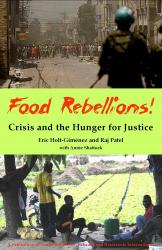 by Eric Holt-Gimenéz and Raj Patel with Annie Shattuck
by Eric Holt-Gimenéz and Raj Patel with Annie Shattuck
In their book, Food Rebellions! Crisis and the Hunger for Justice, authors Eric Holt-Giménez and Raj Patel with Annie Shattuck offer us the real story behind the global food crisis and document the growing trend of grassroots solutions to hunger spreading around the world. Food Rebellions! contains up to date information about the current political and economic realities of our food systems. Anchored in political economy and an historical perspective, it is a valuable academic resource for understanding the root causes of hunger, growing inequality, the industrial agri-foods complex, and political unrest.
Fast Food Nation: The Dark Side of the All-American Meal
from powells.com: “What we eat has changed more in the last forty years than in the last forty thousand,” Eric Schlosser writes in Fast Food Nation, yet Americans know frightfully little about how that food is made, where, by whom, and at what cost. Schlosser’s debut traces the industry’s phenomenal growth from its birth fifty years ago in southern California to its global reach today, from the feedlots and slaughterhouses of America’s new rural ghettos to cutting-edge laboratories where tastes are manufactured and finally to the teenagers handing you french fries at the drive-thru window.
Tomatoland: How Modern Industrial Agriculture Destroyed Our Most Alluring Fruit
“In this eye-opening exposé, Vermont journalist Estabrook traces the sad, tasteless life of the mass-produced tomato, from its chemical-saturated beginnings in south Florida to far-flung supermarkets. Expanding on his 2010 James Beard Award-winning article in Gourmet magazine, Estabrook first looks at the tomato’s ancestors in Peru, grown naturally in coastal deserts and Andean foothills, with fruit the size of large peas. Crossbreeding produced bigger, juicier varieties, and by the late 19th century, Florida had muscled in on the U.S. market, later benefiting from the embargo on Cuban tomatoes; the Sunshine State now produces one-third of the fresh tomatoes in this country. To combat sandy soil devoid of nutrients, and weather that breeds at least 27 insect species and 29 diseases that prey on the plants, Florida growers bombard tomato plants with a dizzying cocktail of herbicides and pesticides, then gas the “mature greens” (fruit plucked so early from the vines that they bounce without a scratch) with ethylene. Behind the scenes, moreover, there exists a horrendous culture of exploitation of Hispanic laborers in places like Immokalee, where pesticide exposure has led to birth defects and long-term medical ailments. Estabrook concludes this thought-provoking book with some ideas from innovators trying to build a better tomato.” –Publisher’s Weekly
Read an excerpt of the book here.
